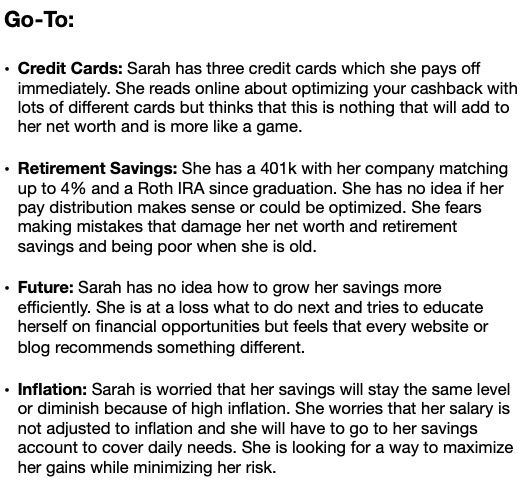Influencer Marketing Personas

Look at that; finally, a new buzzword is popping up for Influencer Marketing that you can drop in your next meeting. Try something like: "Ladies and gentlemen, we must create Influencer Personas! By doing that, we will overcome all challenges that we faced in the past years!"
Sounds good, right? Well, let us be realistic - many challenges and black spots still need attention, and Influencer Personas will not solve them all but certainly bring more clarity. We will look in more detail at the different topics further down below!
Whether you are an organization that works with influencers or are an influencer yourself, this article will provide new input and approaches. Learn the differences between buyer persona creation and influencers, and what to look out for.
The following vital figures are referenced in The State of Influencer Marketing 2023 report to provide additional context.
Let us quickly highlight why analytical maturity in influencer marketing is so important. Based on the report, 23% of the respondents plan to spend over 40% of their marketing budget on Influencer Marketing. A massive portion when you consider how much organizations emphasize evaluating their SEO, PPC, and other marketing endeavors, whereas influencer marketing still appears to be a black box for analytics.
The good news is that enterprises put much more emphasis on measuring the ROI of influencer campaigns. Around 75% of the survey respondents track sales from their influencer campaigns, and 71% measure the ROI rising from 2021 70% and 2020's 67% results. However, companies still wonder why one influencer performs better than another and how they can improve their influencer choice in the future.
Looking at marketing in general, whether PPC campaigns, SEO or Affiliate Marketing, the better the match between customer needs and their satisfaction, the better the performance of the endeavor. Therefore, the essential success factor of influencer marketing is finding the perfect match between the brand, influencer, and followers.
So let's look at what influencer personas are and how they help find the perfect match!
Tired of reading? We got you, here is the video for influencer persona.
What is an influencer persona?
Personas are archetypes of the customer base. Compared to target audiences, personas provide a deeper view of the user groups with a background story, needs, pain points, emotions, go-tos, triggers, interests, psychographics, etc. Organizations can understand their customers in a personalized way by using personas to achieve customer-centricity. Influencer personas present the compressed follower base segments.
Advantages of influencer personas for influencers themselves
Creating them helps the influencer get a clear understanding of the follower base. An influencer is a brand that must also understand who it is speaking to and selling to. All persona features mentioned above will help create better communication strategies and content. Understanding followers' interests and needs allow the influencer to use the right content and hashtags to attract new followers.
In the years when influencer marketing was still in its infancy, the only real KPI that mattered when choosing an influencer was the size of the follower base. Luckily, these days are over, and companies look more at “real engagement” and conversions than follower count.
Accordingly, to convince a brand to work with him, the influencer must provide more insights about the follower base and create content that leads to engagement by effectively addressing the followers' needs and interests.
Summing up, influencer personas provide the following advantages for the influencer:
- A clear overview of the follower base enables them to create engaging content tailored to their psychographics, interests, and needs.
- A clear overview of the companies with products that match the followers' interests and needs guarantees a lucrative ROI.
- In contrast, they will help determine companies whose product or service offerings are not a good match.
Influencer Personas usage for organizations
Ideally, an influencer understands followers like a company understands its customer base.
The main challenge is to choose the right influencer, correct? So the question is, how to do it?
Sometimes choosing the right influencer seems straightforward. Let us take Patagonia's brand that plans to promote its outdoor gear through influencers. A match to someone whose main content is climbing, hiking, and camping seems to be a great fit and pretty obvious.
But for others with less specific products, such as a Finance Organisation App, choosing the right influencer is challenging. Of course, they might locate micro-influencers that discuss content around finance, but you could assume that this audience is already too advanced for a basic app that helps you get a grip on your financials.
When choosing an influencer, companies choose different strategies. They either look for influencers that match their current customer base or pick Influencers with a diverse customer base to attract a new target audience. In both cases, clearly understanding the audience is critical to choosing the right partners since they have a clear overview of the demographics, content topic engagement, true interests, pain points, emotions, and psychological traits of the follower base.
The creation of (influencer) personas
We should first discuss by whom and how the influencer personas should be created. If you have a trustworthy influencer agency, you can rely on the personas created or supervised by the agency. Nevertheless, when we talk about spending big money on an influencer, it might be worth doing your own research to ensure the presented information is accurate. Indeed, when you plan to create a long-term relationship with a chosen influencer, this evaluation is critical to gain an independent and unbiased assessment of the follower base.
The persona creation process should always be 100% data-driven. Asking the influencer to create the personas based on their experience and “gut feeling” is never a good idea. Ensure the presented information is genuinely based on data to avoid bias and manipulation.
Having influencer personas is only helpful if the organization has personas for its own business. Creating personas for the company first is essential because it helps to create a “perfect influencer” mock-up. This “perfect influencer persona” will act as a benchmark tool to compare and evaluate the different influencers.
Mapping brand and influencer personas
To make influencer personas more tangible, let us look at the different persona features and how they can help with the Finance Organisation App's decision-making process. We will use a persona created for the App to envision this process.
We will only be going into a little detail on creating the persona features for the organization since you will find details in the article linked above. Nevertheless, despite restrictions, such as limited data sources, the approach is similar for creating influencer personas. You will heavily rely on the insights gathered from the influencer's chosen platform. The good news is that more and more tools are available to evaluate and gather insights about influencers. Some are to be found here.
Demographics
Gathering demographic information is easy. Either look at the internal statistics on the profiles or use one of the external tools. The goal is to map and compare the features of your brand or product personas. The closer the match is, the better the outcome will be.

With demographics from your business persona, you can derive various suggestions on how the follower's demographic should look and whether the potential influencer is a good fit for this customer segment. An old adult with 20 years of experience who talks about heavy stock investment is probably not the right fit. Sarah is very young and just starting her career with a reasonably small income, so someone younger who focuses on smaller investment portfolios would undoubtedly be a better fit.
Go-Tos
Below are some of the most critical information Sarah needs to hear and understand to be attracted and engaged by the content. Accordingly, the company should find influencers that discuss these topics.

In this context, we should discuss KPI engagement, one of the most critical factors in evaluating an influencer's potential. The problem is that just looking at an influencer's engagement rate is misleading. The specific content-related engagement matters, so you must investigate how many people engage with the content, not the influencer. Let us take this influencer that advertises a new detergent as an example. The engagement rate of 6% is fantastic compared to the 1-3% average. However, if you look closer, you realize there is no actual content-related engagement. So what is the Engagement KPI worth if there is no follower reference to the product? How are laughing or heart-shaped emojis or comments like: “You are so hot” or “Check your DMs” worth anything for the detergent company?
Influencer Go-Tos
Enterprises should focus on the reactions that deal with the content. Ask yourself what is worth more in this case: 1000 comments consisting of hearts and meaningless emojis or 200 comments asking questions about ingredients, availability, or sustainability. The answer is clear!
Personal Interests
You probably know the situation where you attend a party, start a conversation, realize that you have a common interest, like good wines, dogs, or surfing, and instantly bond. A close community is likely created if companies identify common interests between their personas, the influencer, and his followers. It provides opportunities to combine product placements with interests. Imagine the influencer dancing with a dog to good club music, celebrating that she finally sorted her financials- Sarah feels connected to the influencer.

Emotions
In this context, analyzing and understanding the customers' emotions and having the influencer associated with them will automatically lead to more trust and engagement.

Based on Sarah's emotions above, imagine the influencer addressing her frustrations. The influencer creates polls and surveys to find common ground for financial freedom within the follower base to help Sarah decide. On top of that, imagine the influencer sharing her pain of living in such an expensive surrounding. Sarah will relate and feels connected to the influencer.
Matching Brand, Influencer, and Follower Personalities
For many enterprises, brand safety is a critical factor when choosing influencers. By evaluating the followers, topic expertise, content tonality, content-related engagement, and other factors, you are a step closer to securing brand safety.
Nevertheless, you should not stop there but evaluate how the brand personality matches one of the influencers and his followers.
Brand Personality transports the company's values and consequently invokes certain emotions and feelings in the customers. Without developing a suitable brand personality, you remain just another offer. Suppose an organization finds influencers with the same personality traits as the brand. In that case, the chances are good that the followers will connect to the brand because they are already used to the influencer's same values, tonality, and emotions.
We at Mnemonic use the Big 5-factor OCEAN model to run this analysis. What is excellent about applying this model is that it also provides insights on how to present the information. Based on Sarah's psychographic traits, she needs the information provided in a way shown below.

Reflecting a solid Agreeableness Trait, the influencer should use the community to support her message with interviews, shared stories, etc. Since Neuroticism is also a dominant trait, so the influencer should use clear and straightforward language to convey the message. Summing up, the fundamental decision a company has to make in the beginning is whether it wants an influencer that matches its existing customer base to attract the same type or whether it wants to attract a different audience. Irrespective of the chosen path, clearly understanding the follower base is essential. Of course, all this seems very complex, time-consuming, and challenging! Luckily, with the rising availability of analytics tools and advanced machine learning, most processes can be automated without any manual work. If you are interested in Mnemonic's approach to this, please contact us!
